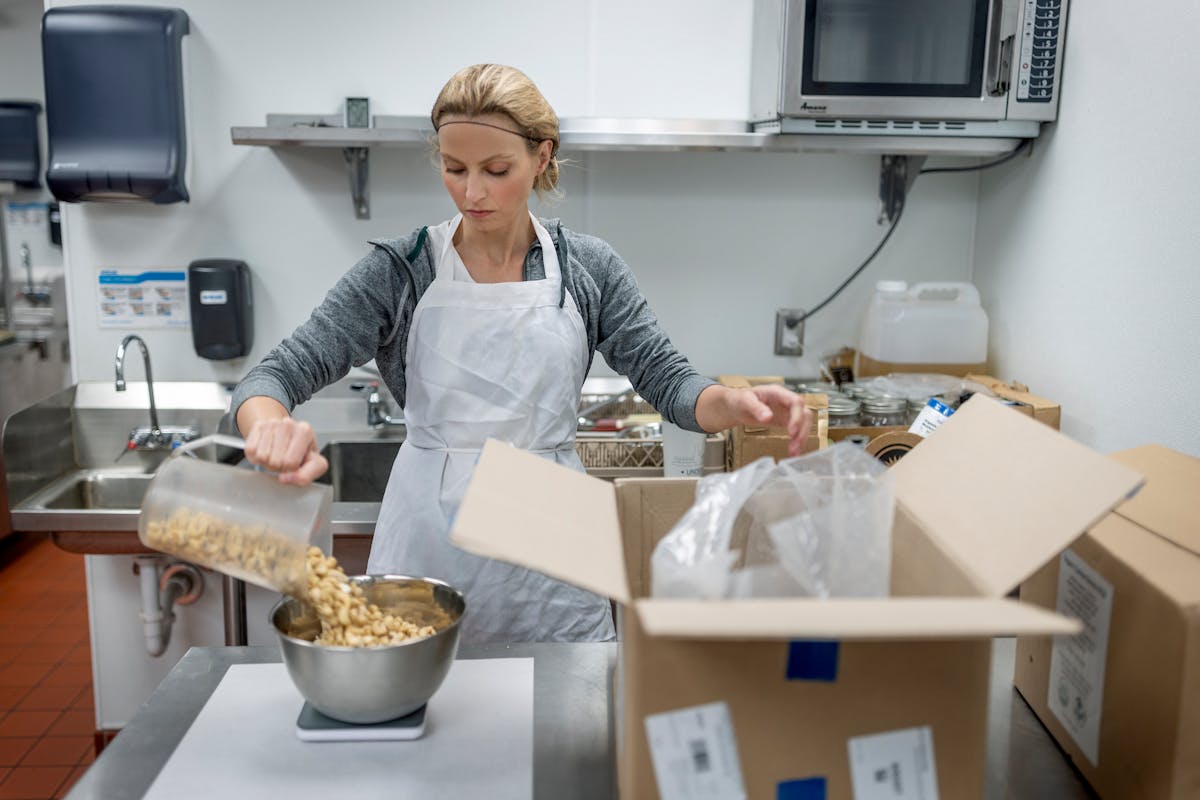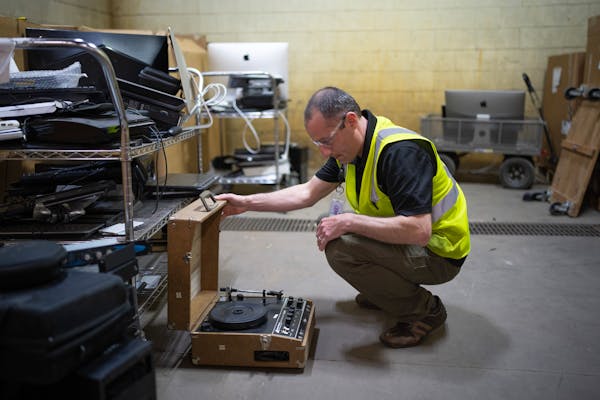Jackson Lefebvre isn't a software engineer or computer programmer, nor can he develop websites.
Yet he's the chief executive and founder of Parkpoolr, an app for booking and processing payments for parking at commercial properties.
His app, which he started four years ago as a junior at the University of Minnesota, manages parking at properties in 18 states. More than 100,000 cars have parked using the platform since it launched, Lefebvre said.
Anyone can take their app idea and turn it into business. Advances in technology and open-source software systems designed specifically to be publicly accessible have allowed anyone with a creative mind to channel that into an app. And at the fraction of what it cost a decade ago.
"I still don't really know what I'm doing," Lefebvre said. "I'm just kind of stumbling through it, but every day I'm working at it and talking to people. Regardless, I feel like I'm going in the right direction by just talking to customers."
Here are some steps to follow to help you develop your own app:
Brainstorm time
First, you have to actually ideate. The easiest way is to dig deeper into a passion, a hobby or a problem you're familiar with, said Zack Steven, the chief executive of Cloudburst, a Minneapolis custom software developer.
Lefebvre said his idea came during the construction of Allianz Field, Minnesota United FC's St. Paul soccer stadium. He read an article about a lack of designated fan parking. Using Google Maps, he noticed a large number of businesses and restaurants around the stadium.
"I thought, 'Well, maybe these people could sell their private parking lots to these soccer fans going to the stadium,'" he said.
Once you have an idea, talk with people that are most likely to use the app. Lefebvre went into neighborhoods in St. Paul to see how residents and business owners felt about it.
"See if it's beneficial to them," he said. "I was out in the field, knocking on doors."
Find your software partner
Twin Cities entrepreneur Charles Tchuinkwa founded Postpal, a peer-to-peer app where people who need to ship items long distances can seek travelers already going that way and avoid shipping costs. He designed the first iteration of his app in 2015 using Wix, a system for easily building websites without coding.
If you are somewhat comfortable with computers but not a coding expert, there are plenty of helpful programs that meet you halfway. You won't have as much personalization, since these programs somewhat act like templates to fill in, but your app will still look professional and polished.
For something more aesthetically pleasing, Tchuinkwa switched to no-code resource FlutterFlow. No-code refers to an approach of building apps without having to create custom software code.
Kris Eul and his business partners used Bubble.io, another no-code platform, to create Kinetic, a social networking app to connect business professionals with similar interests. They started creating on Bubble in April 2020. By June, they launched the MVP version.
"We were able to [launch] in days and weeks, instead of months and quarters," Eul said.
Eul used Kinetic's design to help create Minnesota Exchange, a free online platform launched in partnership with the state's economic development department for Minnesotans starting a business who want to match with experts, mentors and investors.
"[Bubble] has done a really good job of providing different widgets and plug-ins that allow us to add a feature and functionality," Eul said.
Following George Floyd's murder, Steven used Glide to build a map of murals honoring Floyd.
"It didn't have a business model, and it wasn't mean to," Steven said. "[Glide] was a great solution for that because it had the level of functionality I needed."
Erin Wagner used Appgyver and Xano to build her app, Gomigo, a logistics and scheduling app for hanging out with friends.
Other resources: WebFlow, a provider of free website templates, and Airtable, for people wanting to customize databases and data entries.
There are online boot camps where people can learn how to use no-code platforms or communities that teach those skills, like MakerPad. There's also free video tutorials on YouTube.
Costs for those no-code platforms range from $45 to $130 a month, founders said. Don't just go for the cheapest platform, Steven said. Do your research to find out which one works for you.
Pair with a techie
For those who can't quite comprehend the drag-and-drop process of designing apps on no-code platforms, asking a friend or family member with tech know-how for help is better than paying thousands of dollars to a third-party software firm to create a custom app, entrepreneurs said.
Lefebvre built the first version of Parkpoolr with a friend. It wasn't visually appealing, but it worked.
Before graduating from college, Lefebvre entered the Minnesota Cup, a statewide innovation competition the university runs and won the $30,000 student-division prize. He used some of that to hire a software development agency, a company some of his friends and other recent U graduates formed.
"I kind of got lucky," Lefebvre said. "I've heard horror stories about working with overseas software development agencies. And if you were trying to work with a software development agency based in the United States, it's going to cost you six figures, minimum."
At Cloudburst, consultants walk nontechnical founders through the process of starting an app, from pinpointing the customer base they want to serve to what real-world problems the app will solve.
Be wary
There's a genuine concern among nontechnical founders that development agencies or contractors will take advantage of them. Some could take your money to build your app without telling you they don't think it'll be successful. Others could overpromise their own technical skills, since you don't have the expertise to check them.
Wagner has lived the startup grind for about five years. With her three previous startup ventures, two of them didn't go very far, and one eventually sold. But as a nontechnical founder on all three projects, she couldn't interpret what the more technical co-founder was telling her about progress.
For one of the companies that never launched, she was in the dark for nearly two years.
"I was so naïve about the technical process, I didn't even know that it was a red flag that he kept not having something to show us," she said.
Those years of feeling like she was at the mercy of someone else's technical ability — or inability — made Wagner determined to not have a technical co-founder again.
Wagner started building Gomigo from scratch in November 2020. She spent seven months teaching herself how to design apps and hopes to launch Gomigo sometime this year.
A constant process
While having control of the app-development process is valuable to a nontechnical founder, it's very time consuming. To learn the no-code system, Wagner recommends setting aside a whole summer or blocking off evening hours.
No-code platforms also have their limitations. As his business progressed, Tchuinkwa transitioned into creating a custom app on Flutter, a more-advanced version of FlutterFlow, to enhance the visual aspects. For Postpal's system operation and database, he upgraded to Google Firebase.
If a person is leveraging a third-party source or data, there's also vulnerability in the what-if moment, should the no-code platform change or shut down. As a precaution, Steven recommended preserving some budget to react to upgrades, repairs and other fixes.
Play to your strengths
Businesses-minded individuals should stick to what they know when it comes to their apps, like sales or marketing. Use that to gain access to app stores and attract users.
Apple has a portal to submit apps for listing on the App Store, and Google offers instructions on how to uploads apps to Google Play.
Tchuinkwa launched the beta version of his app in January, initially as a marketing tool to sign up users. Early feedback convinced him to add more features and functionality.
If he had to control both the operations and technology side of the business, he'd be overwhelmed.
"I recognized there's a lot of operational activities that has to take place," he said, "and it has to be done effectively outside of the development side."
Money, Work, Know-How

Money, Work, Know-How
'We don't want to lose this mine': Fear sets in for Iron Range miners as shutdown takes hold

UnitedHealth sues the Guardian, alleging defamation in coverage of nursing home care

Prices for international flights drop as major airlines navigate choppy economic climate
Minnesota's med spa industry rises in popularity — and with little regulation



